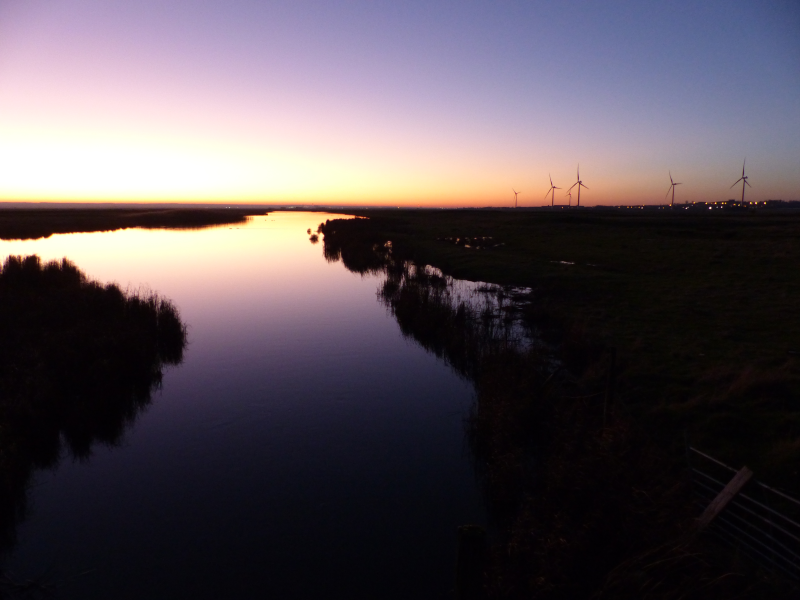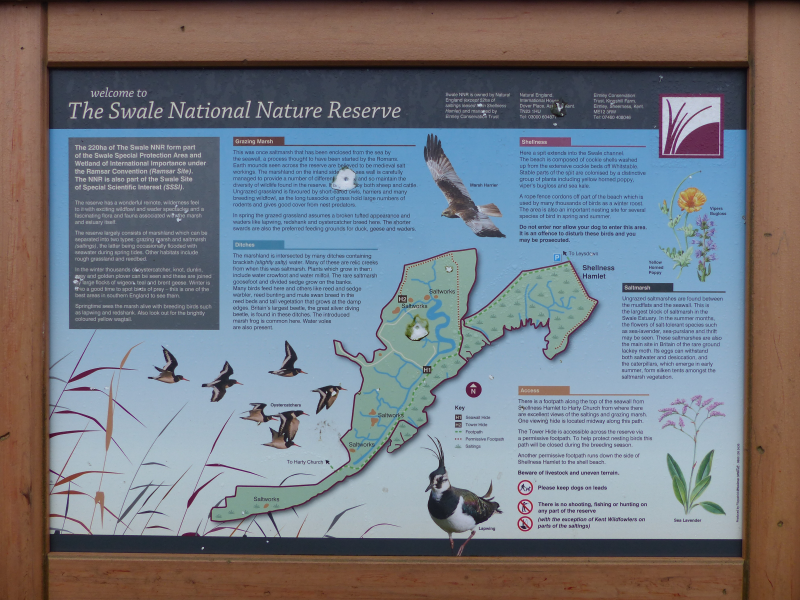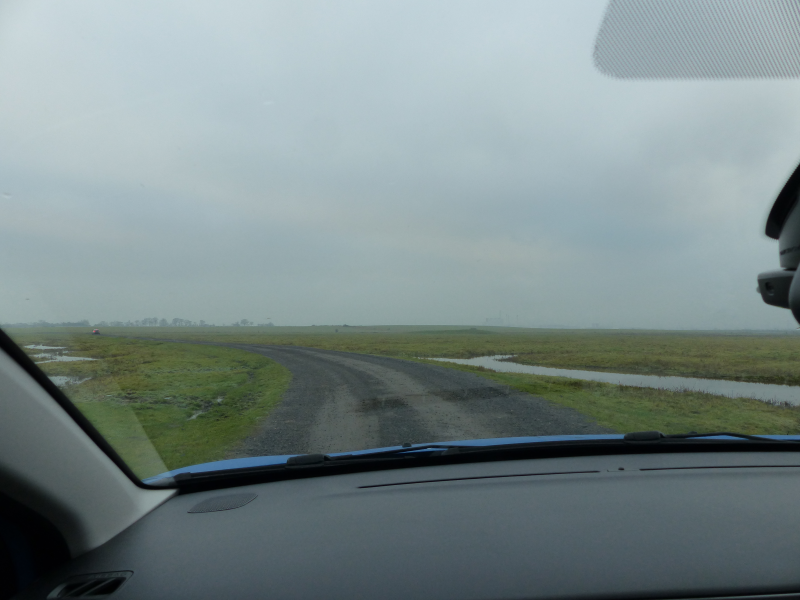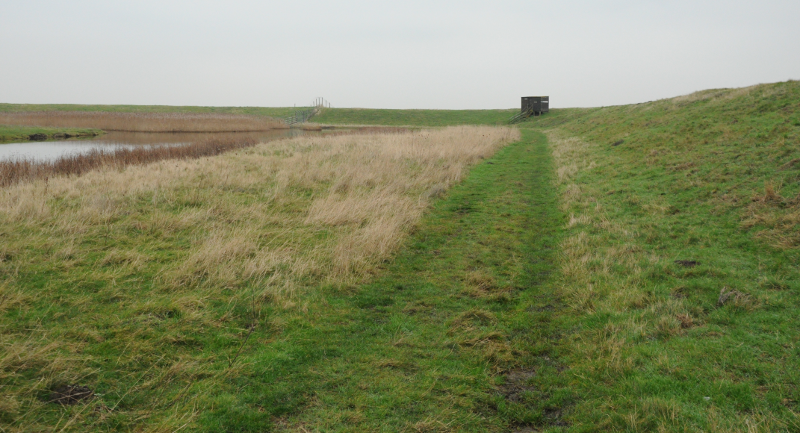Average Birding

Sheppey New Year!
After a whirlwind Christmas tour of AB1 and AB2's respective families, a tiny window of opportunity arose for a trip to Sheppey before the inevitable return to work.
Where even is the Isle of Sheppey?
It's off the North coast of Kent, features a cluster of prisons, a nudist beach, and, more interesting for us, a pair of National Nature Reserves covering it's southern half.
We decided to make the trip at quite short notice, and were delighted to discover that a well reviewed hotel in Queenborough, the Queen Philippa had availability over New Year. We were less thrilled to hear they had a party planned, but you can't have everything.
Day One: Arrival
We reach the island around 3pm on the 30th hoping to have a late visit to Elmley...but the volunteer at the gate turns us away - apparently the car park at the end of the track is completely full, and the track is also jam -packed. Word got out that three Long-eared Owls were on the reserve and the world and his wife have subsequently turned up.
Are they open tomorrow? No - Tuesdays are always closed. What about New Year's Day? Yep. Ok, phew - it'd be a shame to come all this way and not be able to visit, especially now we know there's a chance of LEO!
For now though, we've got a good hour and a half of daylight to spend. Where to go. Well, we haven't got enough time to get to the Swale NNR, so really, our only option is to try out the Capel Fleet Raptor Viewpoint.
We arrive in dire need of facilities. There are none. The site also lacks any sufficient cover from the five or six other resident birders for a shifty wee. Thankfully, we've got at most an hour before it gets dark.
There's a hopeful RSPB sign with 12 (twelve!) raptors on it. I can believe that all of those have been seen from here, but I bet it wasn't all on the same day!
We manage a measly five: Common Buzzard (sitting on a post nearby), Kestrel (a very playful bird making its way up and down the wires alongside the road we arrived along), Marsh Harrier (thirty odd birds faffing about above a roost to the East) and, in the distance, Peregrine Falcon. No owls at all - humph!

Day Two Part One: The Swale NNR
We can't go to Elmley, so the other NNR it is. A twenty-minute drive with a five-minute crawl along the terrible road to Shellness village later, and we're there.

After a brief wander to look at the beach (Brent Geese and Oystercatchers mostly), we set off around the reserve. We're hopeful, again, for Short-eared Owl, but there's also, from what I've been reading, the possibility of coming across some White-fronted Geese, or even a Bean Goose!
What we mostly get, however, is a continuum of Brent Geese. Flying over. Honking in the distance. Honking in nearby fields. Occasionally some Greylags are there too. Of other goose species, however, there is no sign.

Nearer the elevated path that skirts the reserve, we're inundated with Linnets and Reed Buntings. A large flock of the former follows us around the path (or possibly we follow them). Other than that, there's an occasional Mipit. Added to the scenery and the isolation of this place, that's plenty enough for us, even if the weather is a foggy, damp grey.
Not an awful lot of note happens; we come out of the reserve at a time unsympathetic for a lunch at the Harty Ferry Inn (shame, it was good the last time we were here), instead taking a couple of right turns to set us up for an anti-clockwise circuit that leads us, eventually, back to the car. On the way, more Brent Geese (a flock of perhaps 600 odd at the bottom of a field adjacent to the track) and, as we return to the road, another confiding Kestrel.
As we return to the car park, a trundle down past the hamlet is considered. The path through is supposed to be permissive, but the signage is unfriendly, and the precise route very muddy-looking. No, instead, lunch, and a whistlestop trip to Oare; a journey of less than a mile as the crow flies, or, for us, close to an hour's drive!
Day Two Part Two: Oare Marshes
We can't come to this bit of the country without paying this place a visit, even if it is a bit of a silly route from Shellness.
It's gotta be said though - this wasn't much of a fun visit. The East flood was inundated - the scores of waders that usually inhabit it were mostly elsewhere as a result. We found only a few Avocets and Godwits where we'd expect hundreds. Only a collection of very handsome-looking Pintail were available to distract us at any length; after one quick muddy circuit and a sandwich in the car park, we found ourselves on our way back to the Queen Philippa. Even Oare has average days, it turns out!
Day Two Part Three: The Best Pub In Kent
We avoid the New Year's Celebrations at the hotel and instead head to the Admiral's Arm further towards the harbour. This is Kent CAMRA's pub of the year for 2019, and it's obvious why, the beer is varied and delicious (whereas in most of the rest Kent, it is Shepherd Neame and almost entirely devoid of interest). In some ways, it was quite good they shut early - had they been open 'til midnight I suspect our hangovers would have prevented such an entertaining day out on New Year's Day.
Day Three: Elmley, Finally
We're at Elmley for 0905, freshly furnished with sufficient food supplies to get us through the day. We are car three to enter, and I am excited.
If you've not been to Elmley, it's worth having a look at their website before you go. A previous version of their website advised as follows:
There is a two mile track to the reserve. You will find that your car makes a comfortable hide and there is fantastic wildlife to be seen on either side of the track.

As such, we're prepared for that two-mile drive to take us at least half an hour. Lapwings and Curlews hang around within a few feet of the track, other birds are flushed from drains, sit on gates and generally don't treat the cars as the same level of threat they would a human on foot; it's quite something. The track, amusingly, is still better quality than the last bit of road prior to Shellness, and has easily enough road for gentle overtaking when the car behind you isn't quite as interested in looking at what you've stopped to gawp at.
Our only disappointment is that the light is still rubbish. The sun has been confined to quarters; it may even be incarcerated in the prison cluster.

After a greatly enjoyable track drive, we reach the car park. This is where we're going to have to try and find our Long-eared Owls; there's a collection of trees behind the car-park's toilets where they tend to roost. This is, in fact, exactly where I last saw Long-eared Owl, in October 2014!

These photos don't give anything like enough of an idea of how hard it was to find those two birds. That year, I gave up, explored half of the reserve, and only found them after encountering someone who had already found them on my way back up to the car park. As such, both of us are prepared for some serious staring at this little area of scratchy trees.
And some serious staring happens, and we find nothing. A small gang of us assemble guiltily near the toilets, not quite believing that none of us can find these owls. There's chat, instead, about the number of Short-eared Owls that have been seen in the afternoons in the newly planted trees on the other side of the car park: after two-thirty is apparently when that starts to happen. Useful knowledge. We'd best be off to look at the rest of the reserve, so we can be back in time. We start assembling our day bag, when there's a shout from the beginning of the track towards the hides - success?
Indeed! And, compared to last time, they're comparably out in the open. By this, I mean that there are perhaps five very specific places you can stand where both owls are visible, and just a foot either side of those places, they disappear again. Remarkable. Both Average Birders have a good gawp at the owls (a lifer for AB2!), and then reach for cameras. AB2's superzoom (responsible for the 2014 pics, and AB1's headache from desperately downloading a manual for it over EDGE) immediately runs out of battery with the excitement. AB1's trusty D90 will just have to do...

A: It's in the top left hand corner, if you look carefully; the head's hidden, mind.
Great excitement. Now we can get on with having a look at the rest of the reserve.
Now. Even the nearest hide at Elmley is a decent half-hour walk from the car park. The options after that are perhaps a further fifteen minutes each. The daddy hide, though, at Spitend, is at least an hour away, and there isn't even a circular walk back. The payoff? That no-one else goes there, so you get the place to yourself. And, without giving too much away, there are other benefits too.
And so we find ourselves on the trek to Spitend, resisting the urge to scale the sea wall (there could be rafts and rafts of ducks to look at on the other side, but mustn't disturb them!), dodging the larger puddles, and generally wondering if we're losing our collective grip on reality.

It's totally worth it when we get there. Even on a grey day the view from the hide is great. And there are boatloads of Grey Plover, which, after a brief consult with the bird book, will now forever be Beefcake Plover, because they are such hilarious chunks compared to their Plover brethren. There's a good collection of other waders, too, and a few ducks off back in the direction we've just come from. Not enough to have made scaling the banks worth it, anyway :-).
All the signs point to us being the first people to make it here in 2020, but, just as we're starting to think about leaving, a terrifying thing happens. Two other people turn up. And, basically, they appear to be carbon copies of AB1 and AB2, but around five to ten years younger. This is too odd to be borne, and so we flee back to the car park.
As ever, the return journey seems to take less time; it feels like barely forty minutes has passed before we're back on the gravel track between the first hides and the car park, and surely no more than ten minutes before we have the farm buildings within an easy glance.
A bunch of confused looking birders ambush us. "Is this where the Owls are?" Hmm. There's some ambiguity in that question. Which owls, we ask? "The Long and the Short-eared ones." Oh. "Some bloke in a mac told us to wander down here and there'd be people looking." Ah. Well, that isn't us, but we can at least show you where the Long-eareds are!
As we climb back up to the farm, I'm keeping a very close eye on the newly -planted trees that are so famously good for Shorties. And, increasingly, I can see some huddled-up blobs sitting on posts that I'd expect Short-eared Owls to perch on. We're still too far away to be sure though and my glances through the binoculars are more suggestive of Buzzard than owl. Perhaps only the leftmost one of them is a Short-eared Owl? No, I'm totally wrong, all three are Shorties. Brilliant. We haven't even got to the Long-eared Owls yet and the gang we've rescued are already very pleased with us. We deliver them to the small group of folks ogling the still present Long-eareds (how did they miss these people?) and then get on with our own session of gawping unbelievingly at the Short-eareds.
I cannot tell you how weird this is, to stand in a place where, in one direction, two Long-eared owls are sitting, and in the opposite, between five and eight Short-eared owls are sitting/quartering/eating. It's out of this world.

We hang around with this group until it starts to get dark - there are a couple of volunteer wardens who are generous with their extensive knowledge.
One chap in particular has literally written a book about Short-eared Owls. He tells us that our experience of the last two days (i.e not seeing them at Capel Fleet or The Swale) is to be expected - those owls are basically nocturnal; the vole quality of their territory is so good. Even the warden at The Swale only sees them once or twice a season. Useful knowledge.
He also tells us about the two big Marsh Harrier roosts; I guess one of those was the Marsh Harrier party we observed from Capel Fleet.
A female warden (sorry to both wardens for immediately forgetting their names) has some more immediately useful knowledge - there's often a Hen Harrier that joins the roost on this side around half three. Just as its getting dark, Merlin is a possibility on the entrance track on the way out.
Little Owl can be found in the crumbling buildings towards the end of the orchard. Usually there'd be Barn Owl from the entrance track too, but the weather's been suitably unaggressive that they too are almost entirely nocturnal at the moment.
We hang about in the hope of seeing the Hen Harrier, but there's nothing doing on that front. Not that we're bored though - there's constant Shortie entertainment on offer. I also find a Peregrine perched on some gatelike furniture right at the Northern edge of the reserve. Eventually the light starts to give in, and it's time for us to head off. Of the Barn Owl there was, as expected, no sign. I catch sight of something that could well have been a Merlin streaking across the marshes as we drive out of the reserve, but it's a fleeting glimpse, and was it really the right size? Too late now, we'll never know.